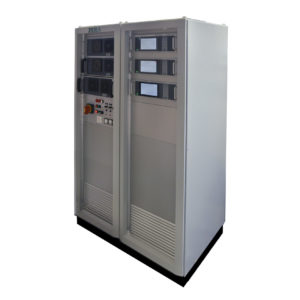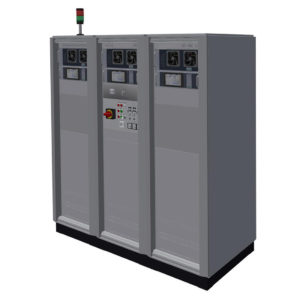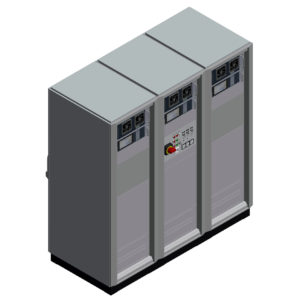What are constant current sources and how can they be used for quality assurance in large industrial facilities?
Constant current sources can be used to generate highly accurate test currents.
But what do we mean by this? As the name already implies, this particular type of source generates a constant current. They are often also called current constants by specialists.
Compared to a real current source, a constant current source is characterised by the constant generation of a current. While a real current source has various limiting factors, such as limited voltage and control speed, a constant current source serves as an ideal current source. The decisive factor for constant current sources is the property that they – ideally – operate independently of the connected load. An electronic control circuit actively works against changes in the current and keeps the test variable at a constant level. Such changes in current can occur, for example, as a result of changes in load resistance or varying internal resistance. The device creates an ideal current source. But how exactly does the process work?
Constant current sources have different control circuits and can therefore fulfil different test requirements. When choosing a constant current source, it is therefore very important to clearly define the field of application and the associated requirements in advance. With a reliable manufacturer such as ZERA, our sales engineers can help to define the application field of the constant current source precisely. Basically, constant current sources differ in their maximum current capacity. In addition, the properties such as the control accuracy as well as the control speed can be individually adapted. Another decisive factor is the required power. Depending on the operation, an adapted power is required for the generation of a constant current. For this reason, it is extremely important to be fully informed about the sources as well as the requirements. If we look at the constant current sources RPE04 and RPE08 as an example, we can see decisive differences. While the former source has a maximum generation of 4 kVA, the latter can be cascaded with 8 kVA each. In addition, the sources can be set up with 1 and 3 phases. There are also clear differences in the maximum power generation. While the RPE04 constant current source generates up to 265 A, more powerful variants can generate up to 10,000 A. This shows that the requirements and the area of application for the electrical circuit must be defined in order to use a sufficiently powerful source correctly.
A constant or ideal current can be generated with a constant current source. But in which areas is the controlled current circuit used? In the industry – especially in large safety-relevant industrial facilities – constant current sources are used to test protective devices. Circuit breakers with thermal release can be tested in this way. Depending on the model, circuit breakers with magnetic release or miniature circuit breakers and compact circuit breakers can also be measured and tested. The main functions of a constant current source are to perform long or short-time measurements with a constant current.
The function within the electrical circuit can be explained in simplified terms as follows: A constant current source electronically converts the mains voltage into a regulated constant output current. The closed circuit is formed by the internal resistance and the connected load resistance. During no-load operation of the circuit, the so-called terminal voltage is effective. However, as soon as the circuit is closed, a voltage drop is generated by the incoming load current. A constant current source ideally has an almost infinite internal resistance. To allow a current to flow, a sufficiently high electrical voltage is generated between the terminals and the load. In this way, a constant current source succeeds in generating an ideal test current.
The use of constant current sources makes it possible to check the quality and safety of large industrial facilities. Reliable quality control and assurance are essential in industry. These processes also serve to comply with internal company standards. By checking the protective devices in one’s own network, smooth processes can be ensured. Basically, a constant current source belongs to the so-called primary test technology. Here, tests and measurements ensure that all switching devices are inspected. In this way, it can be ensured, for example, that the circuits are designed according to requirements. The constant current source fulfils an important role by generating an ideal electrical test variable. In this way, failures in large industrial facilities can be avoided and thus possible claims for damages or high insurance fees can be averted.

We offer you a personal individual consultation.



